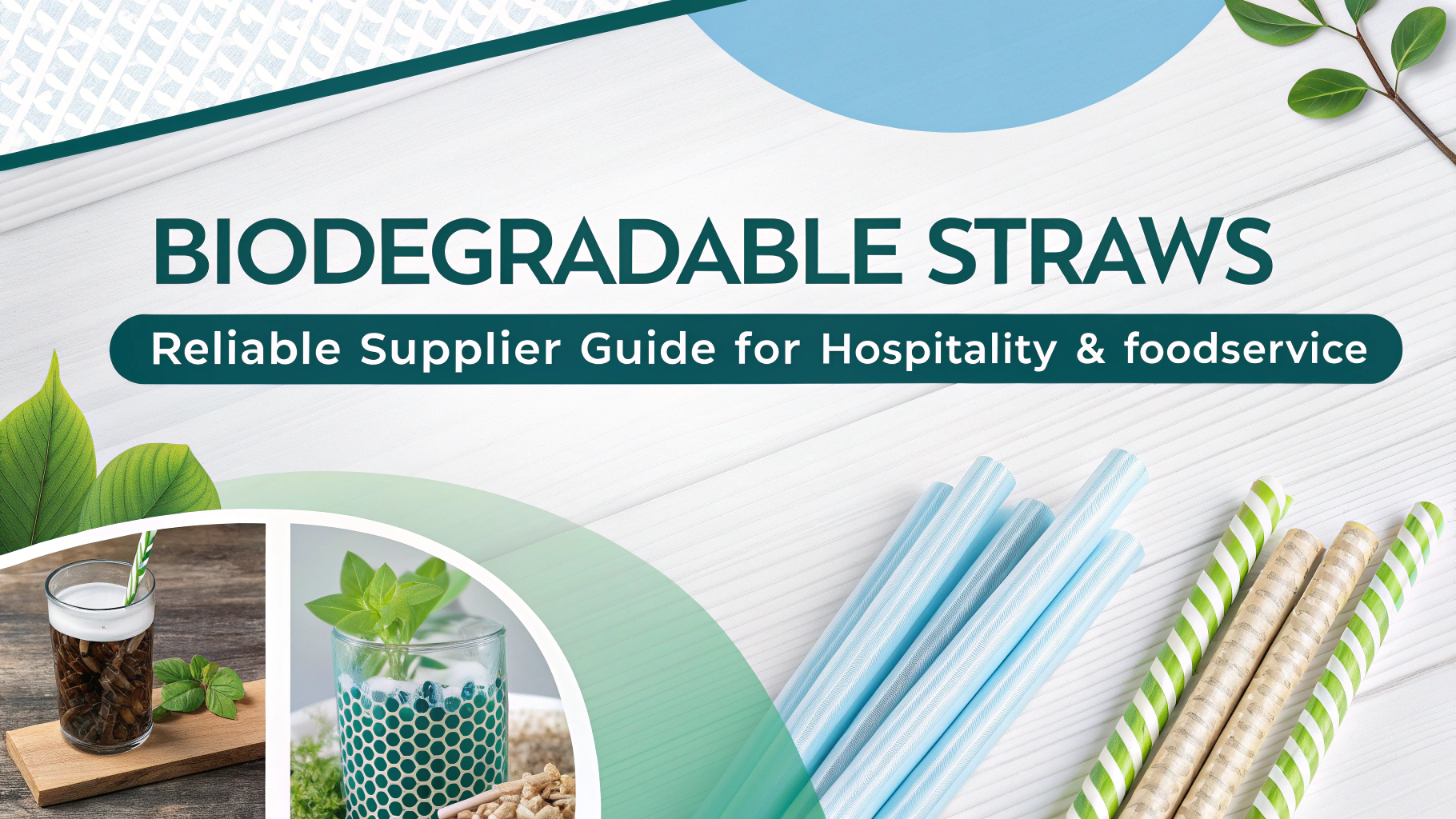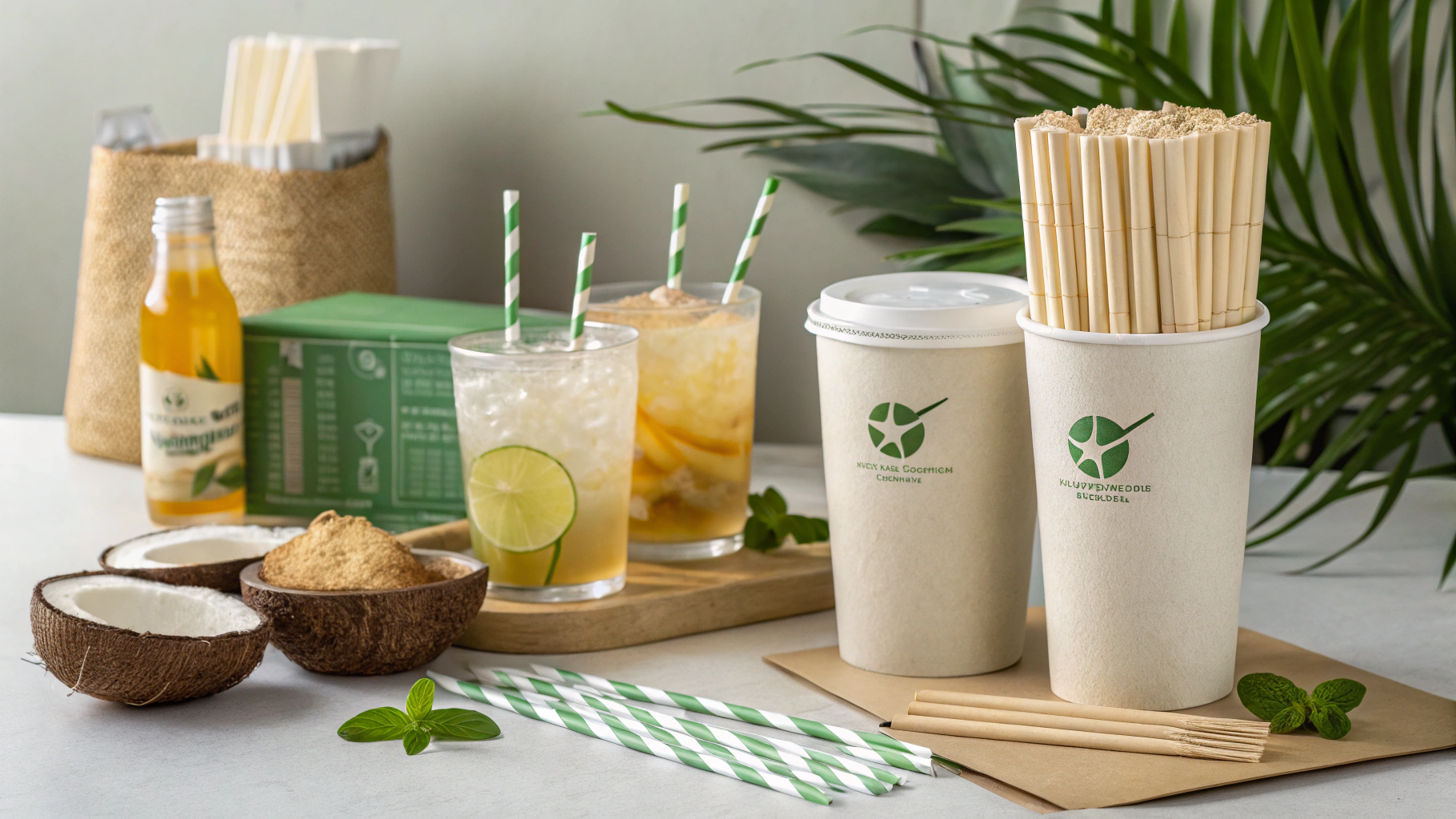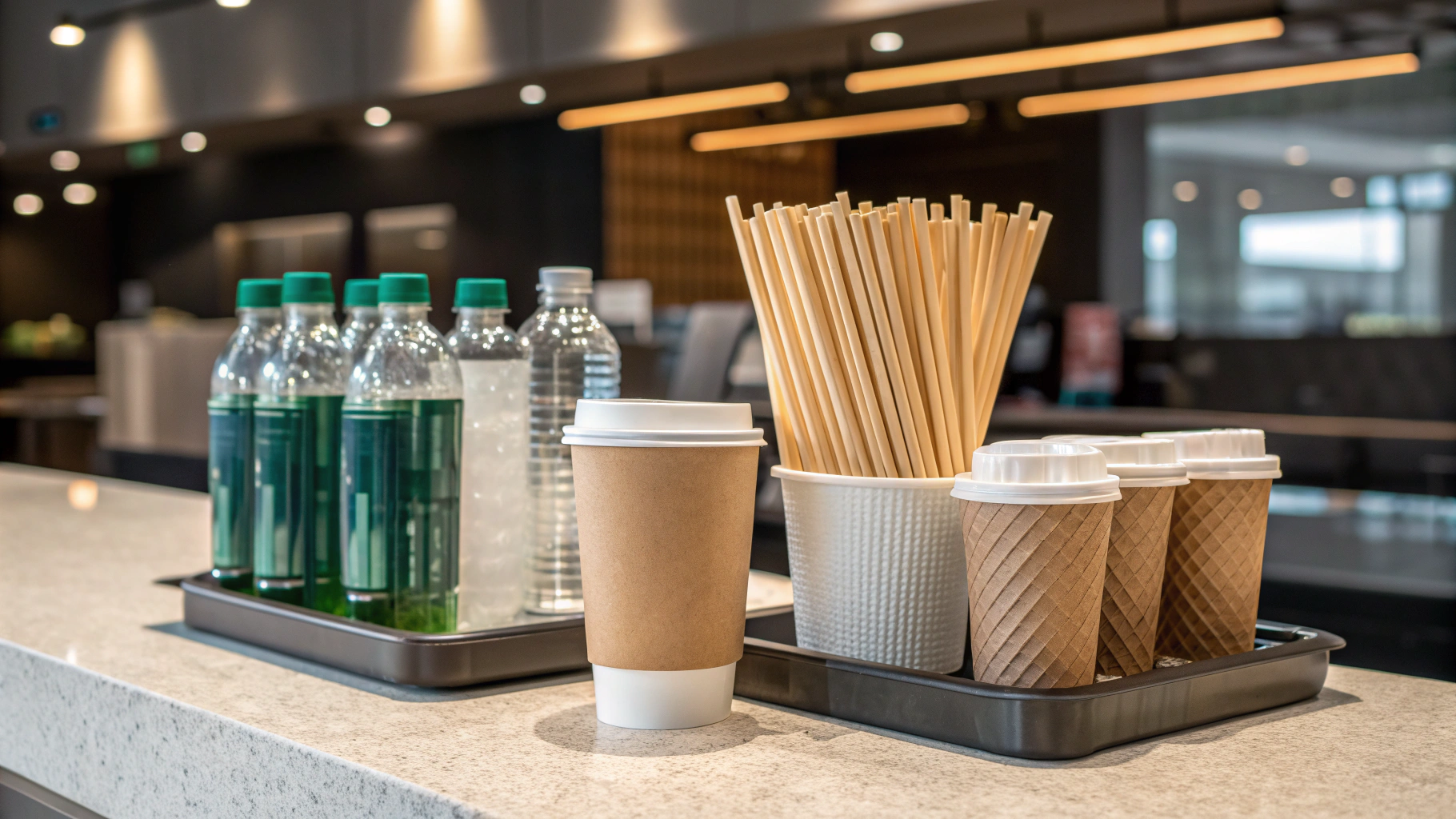
The global beverage market is under intensifying scrutiny regarding its reliance on single-use plastics. As consumer preferences evolve, the rapid expansion of bubble tea’s popularity has brought with it an amplified demand for its distinctive, wide plastic straws, essential for consuming tapioca pearls. However, a critical misconception persists within the industry: the belief that these plastic boba straws are effectively recyclable. The stark reality is that most plastic boba straws, despite being technically made from recyclable polymers, are not efficiently processed by current recycling infrastructure.
This systemic failure poses significant operational and reputational challenges for businesses operating within the beverage and food service sectors. Beyond the environmental impact, a lack of proactive engagement with sustainable procurement practices can lead to non-compliance with escalating regulations, increased waste management costs, and a diminishing brand image among an increasingly eco-conscious consumer base. Ignoring this issue means risking market access, eroding customer trust, and undermining long-term business viability.Proactive sustainable procurement is crucial for beverage businesses to avoid risks and enhance brand image.
The Unrecyclable Reality of Plastic Boba Straws: A Supply Chain Challenge
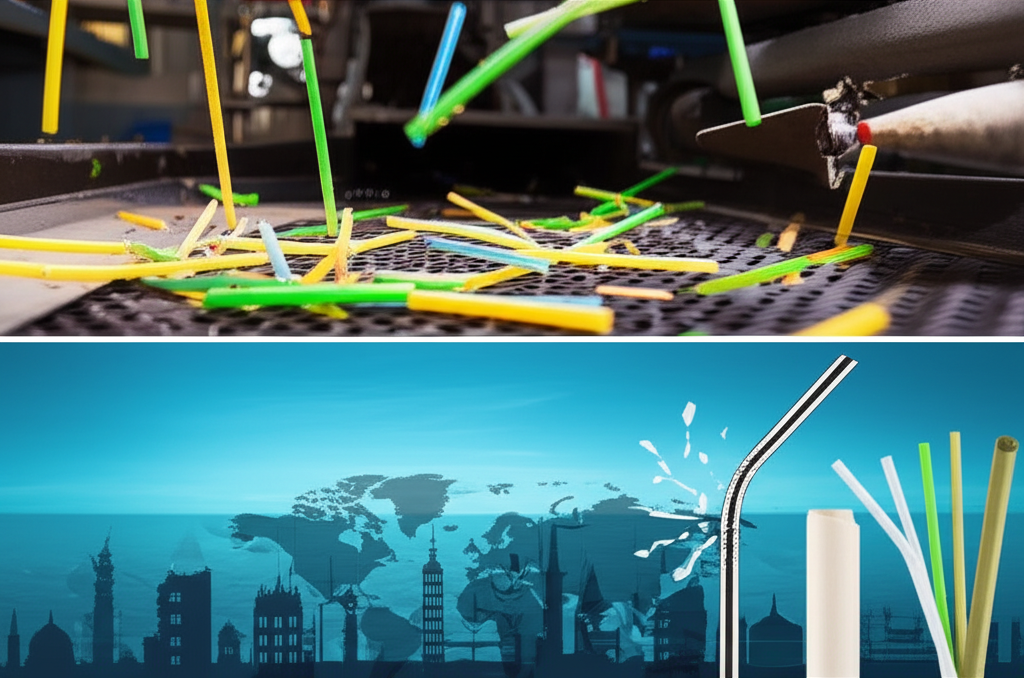
Plastic boba straws, typically crafted from polyethylene (PE) or polypropylene (PP), are indeed made from polymers that are technically recyclable. Yet, their journey through the recycling stream is fraught with systemic failures. The fundamental issue lies in their physical characteristics: their small size and lightweight nature, even with a diameter of 12mm or more to accommodate tapioca pearls, cause them to slip through the intricate mesh of automated waste-sorting systems. Instead of being sorted for recycling, they are frequently diverted to landfills or, worse, contaminate otherwise valuable recycling streams.
Compounding this mechanical failure, residual sugar and beverage content clinging to the interior of used straws further complicate the recycling process. This sticky contamination reduces the quality of recycled material, making it less desirable for reprocessing and often leading to its rejection. The economic viability of collecting and processing such lightweight, often contaminated items is also extremely low, weighing less than a gram per straw. This low economic value disincentivizes recyclers from investing in the specialized equipment or manual labor required to handle them effectively.
Why Standard Recycling Systems Fail Plastic Boba Straws
The core reason standard recycling systems fail plastic boba straws is largely mechanical. Much of the machinery in modern recycling facilities is designed to efficiently sort larger, heavier items. Small, thin, or irregularly shaped plastics, including straws, often fall through screens, bypass optical sorters, or become entangled in machinery, causing clogs and costly downtime. When this happens, they are typically shunted to the general waste stream, ultimately ending up in landfills or incinerators.
Local municipal guidelines for recycling also exhibit significant variation, creating a confusing landscape for businesses and consumers alike. For example, while Los Angeles’s recycling programs might accept plastic straws, Denver’s do not, highlighting the fragmented nature of recycling infrastructure across different regions. This inconsistency means that a standardized approach to plastic straw disposal is practically impossible for national or international beverage chains without significant localized adjustments. Furthermore, the overall low market demand for post-consumer recyclables of this specific type – often low-grade polypropylene – means that even if a straw makes it through sorting, it may still face incineration or landfill disposal due to a lack of end-market utility.Small, contaminated plastic boba straws often bypass recycling systems due to mechanical and economic inefficiencies.
Escalating Environmental Impact & Regulatory Pressure on Single-Use Plastics
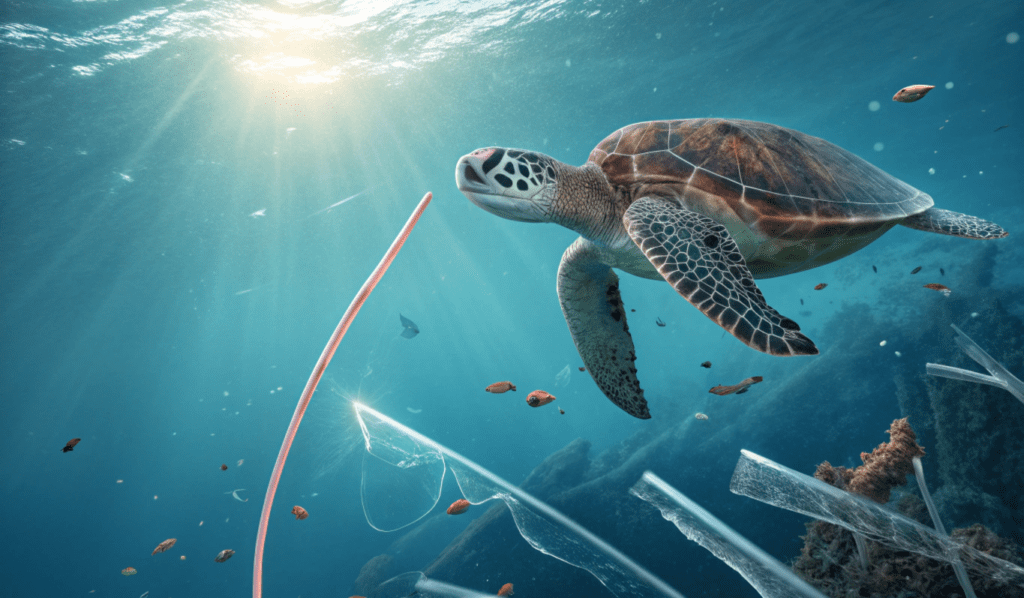
The environmental consequences of persistent plastic straw usage are profound and far-reaching. Petroleum-based plastic straws do not biodegrade; instead, they take hundreds of years to break down, gradually disintegrating into smaller and smaller pieces. This fragmentation leads to the pervasive issue of microplastic pollution, with an estimated 8 million tons of plastic entering oceans annually. These microplastics infiltrate water sources, soil, and the global food chain, impacting ecosystems, marine life, and posing potential, still-emerging threats to human health. Moreover, harmful chemicals like Bisphenol A (BPA) can leach from degrading plastics into the environment, adding another layer of toxic burden.
Global Shifts Towards Plastic Straw Bans and Reductions
Governments worldwide have begun to acknowledge the severe environmental harm caused by single-use plastic straws, translating this awareness into concrete regulatory action. Seattle led the way in the U.S., implementing a ban on plastic straws in January 2018, swiftly followed by other major cities like San Francisco and Portland. This domestic trend is mirrored by robust international legislation. The European Union, for instance, implemented a comprehensive ban on single-use plastics in 2021, signaling a strong and irreversible regulatory trend that impacts global supply chains.
Beyond the EU, countries in Asia are also enacting significant policies. Thailand adopted a roadmap for plastic waste management for 2020-2030, aiming to reduce plastic waste by 0.78 million tons annually and save 3.9 billion baht in waste management costs. This ambitious roadmap includes a ban on plastic straws, cups, and bags. Similarly, the Selangor state government in Malaysia imposed a ban on plastic straws in all eateries on July 1, 2019. These global shifts demonstrate a clear, irreversible trajectory towards eliminating single-use plastics, placing immense pressure on businesses to adapt or face significant compliance risks and market access restrictions.Global regulations are rapidly shifting towards banning single-use plastics, compelling businesses to adopt sustainable alternatives.
Operational Hurdles: Shifting from Plastic Boba Straws to Sustainable Alternatives
Transitioning away from conventional plastic straws presents a unique set of operational hurdles for businesses, particularly within the dynamic bubble tea sector. Food facilities frequently report increased costs when switching from traditional, inexpensive plastic straws to alternative materials. Furthermore, many existing business models, especially those heavily reliant on “to-go” beverages, are deeply integrated with single-use packaging components, making a seamless shift challenging.
A particularly acute challenge for bubble tea operations is finding alternative straws sturdy enough to reliably puncture the sealed plastic cups and accommodate the unique texture and size of tapioca pearls. Unlike standard beverage straws, boba straws require a larger diameter (typically 12mm or more) and sufficient rigidity, which many eco-friendly alternatives struggle to match. Ensuring continued customer satisfaction during this transition is paramount, as historical surveys indicate that approximately 85% of users initially preferred traditional plastic straws. While 76% are open to reusable alternatives, the initial adoption curve can present a customer experience challenge.
Navigating “Compostable” vs. “Biodegradable” Labeling for Eco-Friendly Boba Straw Alternatives
The landscape of eco-friendly straw alternatives is complex, often marked by ambiguous labeling. It is crucial for procurement and operations teams to understand the distinction between “compostable” and “biodegradable” to avoid missteps. “Compostable” straws, commonly made from plant-based materials like Polylactic Acid (PLA) from corn plastic or Polyhydroxyalkanoate (PHA) from canola/soy seeds, are designed to decompose into nutrient-rich organic matter. However, this decomposition typically requires specific industrial composting conditions, characterized by high heat and microbial activity, which are not universally available.
Crucially, these alternative plastics are often considered contaminants in traditional plastic recycling streams. Mixing compostable straws with conventional plastics can disrupt recycling machinery, leading to operational inefficiencies, and ultimately lower the quality of recycled materials. Mislabeling or misunderstanding can lead to these “eco-friendly” options still ending up in landfills. While some advanced PHA straws offer a promising solution by being marine-degradable, breaking down even in ocean environments, the majority of compostable materials demand specific disposal pathways that are not yet widespread. For a deeper dive into sustainable options for your business, exploreboba tea straws wholesale.Understanding “compostable” versus “biodegradable” is vital for selecting effective, compliant boba straw alternatives.
Case Study: Vancouver’s Adaptation to Plastic Straw Regulations
The City of Vancouver, British Columbia, provides a salient example of successful phased compliance with single-use plastic regulations. Their plastic straw by-law, effective April 22, 2020, significantly impacted beverage businesses across the city. Recognizing the unique operational challenges faced by bubble tea vendors due to the need for specialized straws, the city wisely granted a one-year exemption, from April 2020 to April 2021. This regulatory foresight allowed bubble tea establishments sufficient time to research, source, and integrate robust alternative straw solutions into their supply chains and customer experience models.
As of April 22, 2021, all bubble tea vendors in Vancouver were required to comply with the ban, demonstrating that with adequate planning and regulatory support, businesses can successfully transition to sustainable practices without compromising their core offerings. This case study underscores the importance of a proactive approach to regulatory changes and stakeholder engagement. It also highlights that some by-laws, like Vancouver’s, do mandate the provision of flexible plastic straws upon request for accessibility needs, ensuring inclusivity during the transition.Vancouver’s phased ban on plastic straws demonstrates successful industry adaptation with proactive planning and regulatory support.
Comparison Table: Sustainable Boba Straw Alternatives for B2B
Choosing the right sustainable boba straw alternative requires a careful evaluation of operational impact, compliance, and ROI. Below is a comparison of common options:
| Särdrag | B2B operationell påverkan | Efterlevnadsanteckning | ROI -potential |
|---|---|---|---|
| Pappersstrån | Prone to sogginess, affecting drink experience; requires robust, PFAS-free options. | Generally compliant with single-use plastic bans; often compostable. | Lower initial cost than other alternatives; enhances brand sustainability. |
| PLA Straws | Requires specific industrial composting facilities for proper decomposition. | Not accepted in traditional plastic recycling; may contaminate streams. | Higher cost than plastic; boosts green image if correctly composted. |
| Rostfritt stål | Durable, reusable; requires in-house or third-party cleaning infrastructure for dine-in; cannot puncture seals easily. | Highly compliant with reuse-focused regulations; significantly reduces single-use waste. | High upfront cost; significant long-term savings for dine-in; strong customer appeal. |
| PHA sugrör | Biodegradable, including marine-degradable options; some break down in home compost. | High compliance potential with evolving regulations; avoids landfill. | Higher cost than PLA; strong environmental brand differentiation; premium offering. |
| Bambu sugrör | Sturdy but may be too narrow for boba pearls; can retain residue and require thorough cleaning. | Compliant with single-use bans; natural, renewable resource. | Moderate cost; appeals to eco-conscious consumers; requires quality control. |
For businesses seeking a reliable partner in this transition, exploring dedicated suppliers of alternative boba straws can be beneficial. Find more options forsustainable boba drinking straws B2B.Evaluate sustainable boba straw alternatives based on operational impact, compliance, and ROI for informed procurement.
Strategic Imperatives for Sustainable Boba Straw Procurement and Operations
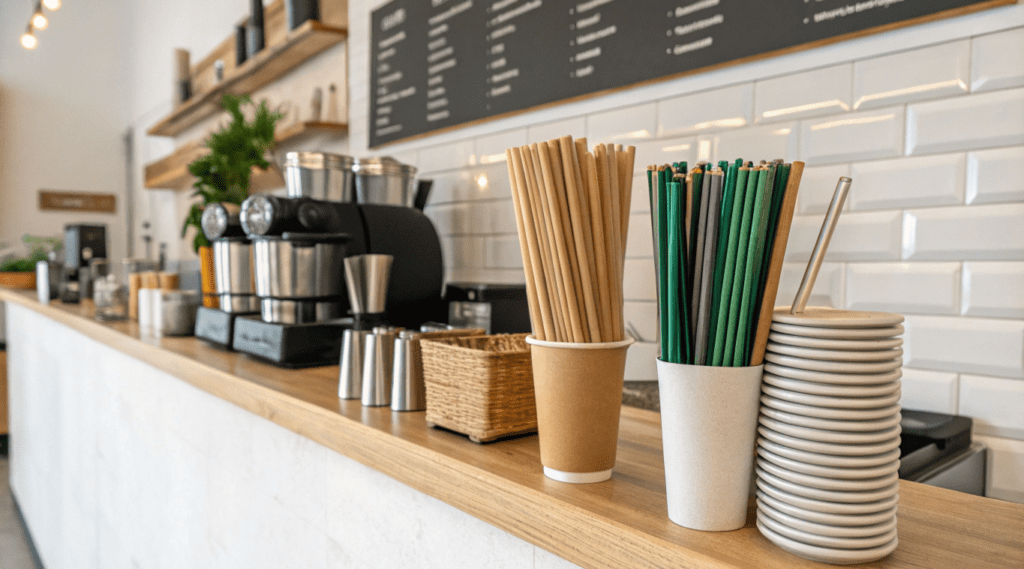
For supply chain executives and procurement managers, navigating the shift away from plastic boba straws transcends mere compliance; it represents a strategic imperative to secure future market position and brand equity. The foundational principle for this transition is to rigorously adopt the “Reduce, Reuse, Recycle” hierarchy, prioritizing waste reduction at the source and designing systems for circularity. This means questioning the necessity of single-use items where reusable alternatives are viable, especially for dine-in experiences.
A critical step is to conduct comprehensive Life Cycle Assessments (LCAs) for alternative materials. While counter-intuitive, some LCAs have indicated that traditional polypropylene (PP) straws can sometimes show a lower global warming potential than even stainless steel straws when considering their entire life cycle, including manufacturing and end-of-life. This highlights the complexity and the need for data-driven decisions rather than relying on perceived “green” options. Procurement teams must engage proactively and strategically with suppliers to develop and secure innovative, compliant boba straw alternatives that meet both environmental standards and operational demands, such as puncture strength and resistance to sogginess. Businesses like PMI Packaging Sdn Bhd in Malaysia, for example, have been manufacturing corn starch and PLA straws since 2016 and are researching materials like oil palm waste and tapioca for future solutions.
Investing in robust consumer education is also vital. While 85% of consumers historically preferred plastic straws, 76% are now open to reusable alternatives, indicating a significant shift in readiness. Educating customers on the proper disposal of new materials and the long-term benefits of reusable options can foster adoption and strengthen brand loyalty. Moreover, businesses must remain cognizant of accessibility needs, as some regulations, like Vancouver’s by-law, still mandate the provision of flexible plastic straws upon request for individuals with disabilities. This balanced approach ensures both environmental responsibility and social equity. To further understand wholesale procurement options, visitboba straws wholesale.Strategic procurement of sustainable boba straws requires LCAs, supplier engagement, and consumer education for market leadership.
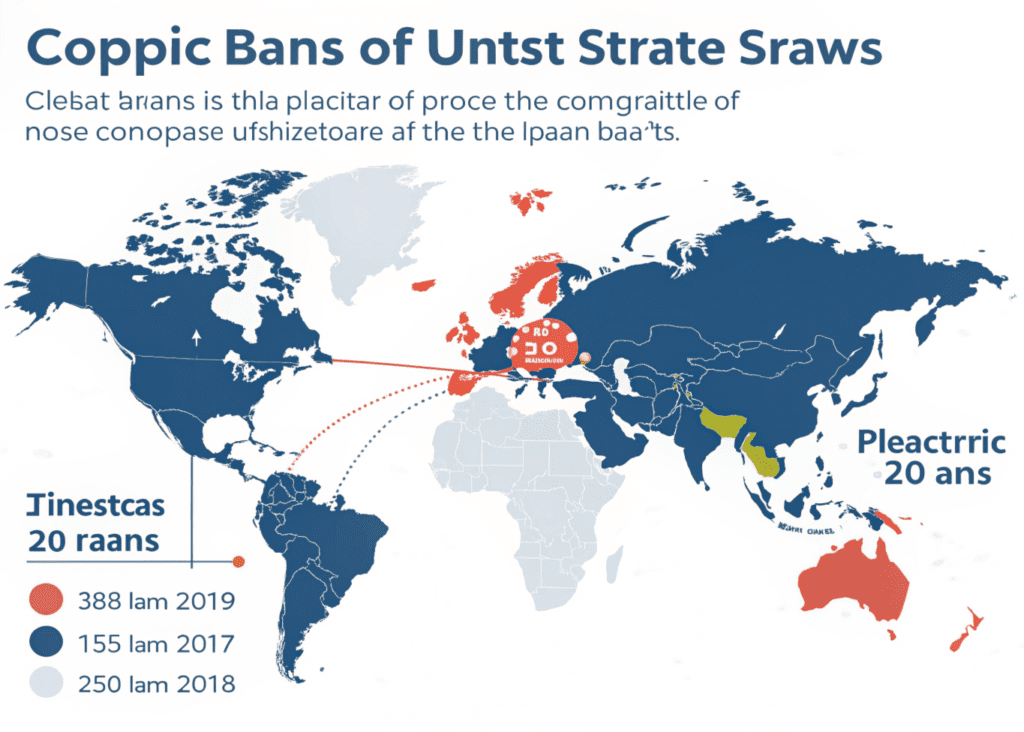
Future Trends & Innovation
The trajectory for sustainable beverage packaging over the next 5-10 years points towards radical innovation and increasingly stringent regulatory frameworks. Expect continued global expansion of single-use plastic bans, extending beyond straws to other packaging components. The EU’s 2021 ban and Thailand’s 2020-2030 roadmap, which aims for widespread reduction and bans on plastic items until 2026, are harbingers of this global movement. Procurement strategies must anticipate these legislative shifts, not merely react to them.
Innovation in material science will bring forth new generations of truly sustainable alternatives. Expect to see increased adoption of advanced bioplastics like marine-degradable PHA, which offers a genuine end-of-life solution even in challenging environments. Research into novel, renewable plant-based resources, such as tapioca and agricultural waste products like oil palm empty fruit pulp, will likely yield commercially viable solutions. Furthermore, the concept of “integrated packaging,” where straws are part of the main beverage container (e.g., juice boxes), is also facing bans in regions like New South Wales, Australia, as of January 2025, pushing for even more fundamental shifts in design. The emphasis will move beyond just “compostable” to materials that are genuinely biodegradable across diverse natural environments or those that can be efficiently closed-loop recycled into high-value products. Future procurement will prioritize materials with transparent LCAs that demonstrate minimal environmental impact across their entire lifecycle, favoring products with high recycled content where plastics remain unavoidable.Future trends indicate stricter plastic bans and innovative bioplastics, demanding proactive procurement strategies.
Competitive Advantage & Business Case
The transition to sustainable boba straws is not merely a cost of doing business; it is a profound opportunity for competitive differentiation and long-term value creation. Quantifiable benefits include significant risk mitigation against escalating compliance penalties and brand reputation damage. By proactively adopting sustainable solutions, businesses can avoid the substantial fines associated with plastic bans and circumvent potential market access restrictions in increasingly eco-conscious regions. For example, countries implementing plastic waste reduction roadmaps, like Thailand, project billions in annual savings from reduced waste management, a benefit that can be partially realized by businesses minimizing their waste footprint.
Moreover, this shift offers a powerful brand value uplift. Consumers, especially the younger demographic, are increasingly making purchasing decisions based on a company’s environmental stewardship. A business that champions genuinely sustainable practices, such as offering truly eco-friendly boba straws, can significantly enhance its brand perception, foster stronger customer loyalty, and even capture a larger market share among environmentally aware consumers. This proactive stance transforms a potential compliance burden into a distinct competitive advantage, positioning the brand as a leader in sustainability and innovation within the crowded beverage market.Embracing sustainable boba straws offers competitive advantage through risk mitigation, brand uplift, and increased market share.
Conclusion: Pioneering a Plastic-Free Future for Boba
The widespread belief that plastic boba straws are recyclable is largely a misconception, with significant environmental and operational consequences for businesses. The transition away from these problematic single-use plastics is no longer merely an option; it is a strategic imperative driven by evolving consumer expectations and stringent global regulations. Proactive adoption of genuinely sustainable alternatives, coupled with a deep understanding of the nuanced differences between “compostable” and “biodegradable” materials, is crucial for long-term viability.
Transformyour supply chain now to meet sustainability mandates, mitigate regulatory risks, and profoundly enhance your brand’s environmental stewardship. Secure your market leadership in the sustainable beverage economy by embracing truly eco-friendly boba straw solutions today.Embrace sustainable boba straw solutions now to enhance brand stewardship and secure market leadership.
Vanliga frågor
Are plastic boba straws truly recyclable in standard municipal systems?
No, despite being made from recyclable polymers like PE or PP, their small size and lightweight nature cause them to fall through sorting machinery, often ending up in landfills or contaminating other recycling streams.
What are the main environmental impacts of plastic boba straws?
Plastic boba straws contribute to microplastic pollution, taking hundreds of years to break down and infiltrating ecosystems, marine life, and potentially the food chain, with harmful chemicals leaching into the environment.
What operational challenges do bubble tea businesses face when switching to sustainable straws?
Challenges include increased costs, finding alternatives sturdy enough to puncture sealed cups and accommodate tapioca pearls, and ensuring customer satisfaction during the transition.
What is the difference between ‘compostable’ and ‘biodegradable’ straws?
‘Compostable’ straws require specific industrial composting conditions to decompose, while ‘biodegradable’ straws break down naturally in various environments, though the speed and conditions vary greatly.
How can businesses ensure compliance with evolving plastic straw regulations?
Proactive research, strategic sourcing of compliant alternatives, conducting Life Cycle Assessments, and engaging with suppliers are crucial for adapting to regulatory shifts and securing market position.


